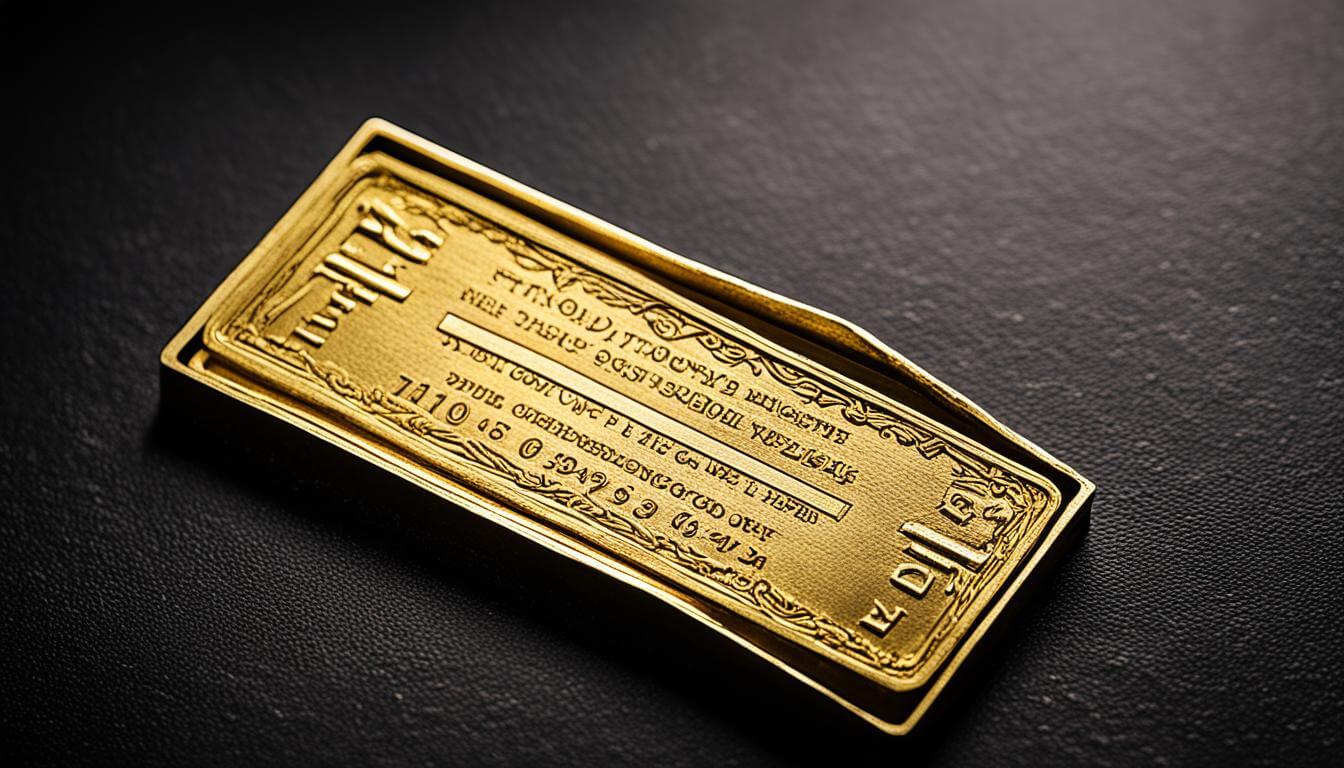Gold Weight Conversion: Grams In An Ounce
Welcome to our informative guide on gold weight conversion. If you’ve ever wondered how many grams are in an ounce of gold, you’ve come to the right place. Understanding this conversion is important when working with gold, as it ensures accurate measurements and valuations. So, let’s dive in and explore the relationship between grams and ounces in the world of gold.
Gold, along with other precious metals, is typically measured in troy ounces (ozt), which differ from the standard imperial ounces (oz) used in the United States. While an imperial ounce equals 28.35 grams, a troy ounce is equivalent to 31.1034768 grams. This means that one ounce of gold should contain precisely 31.103 grams of gold. It is crucial to understand this conversion to avoid any discrepancies in gold weights and values.
Contents
Why Does Oz Vs Ozt Matter?
Understanding the difference between ounces (oz) and troy ounces (ozt) is crucial in the gold industry. If gold bullion prices are calculated based on avoirdupois ounces instead of troy ounces, the math will be off by approximately 10%. This discrepancy can significantly impact the value of the product.
Gold traders and industry professionals work with troy ounces as the standard measurement for gold, silver, platinum, and other precious metals. It is important to use the correct measurement to ensure accurate pricing and comparison of gold products.

In the world of gold, every ounce matters. Whether you’re buying or selling gold bullion, understanding the difference between ounces and troy ounces can make a significant difference in the overall price. While both ounces and troy ounces are units of weight, they vary in terms of their measurement standards and the industries that utilize them.
For gold traders and industry professionals, using troy ounces is essential. Troy ounces are the preferred unit of measurement in the precious metals market because they provide a more accurate representation of a metal’s value. A troy ounce is slightly heavier than the standard ounce, measuring approximately 31.103 grams compared to the 28.35 grams of an avoirdupois ounce.
When calculating gold bullion prices, it is crucial to use troy ounces to ensure accuracy. Using avoirdupois ounces can result in a miscalculation of approximately 10%, leading to significant discrepancies in the final price. For example, if you were to calculate the price of 1 troy ounce of gold based on avoirdupois ounces, you would end up with a lower value than the market standard.
The Impact On Gold Bullion Prices
Gold bullion prices are determined by the weight and purity of the gold. When buying or selling gold products, such as bars or coins, understanding the difference between ounces and troy ounces is crucial. Using the wrong measurement can result in an inaccurate price calculation and potential financial loss.
Accurate Pricing And Comparison
Using the correct measurements ensures accurate pricing and comparison of gold products. When comparing the price of different gold bullion bars or coins, the weight and purity are key factors to consider. By utilizing troy ounces, you can compare prices more effectively and make informed decisions based on the true value of the gold.
A Standard Measurement For Precious Metals
Troy ounces have been used as the standard unit of measurement for precious metals for centuries. This system originated in the town of Troyes, France, and spread throughout Europe. It became officially established in England in the early 1400s and was later adopted by the United States with the Coinage Act of 1828.
Today, troy ounces are widely recognized and accepted in the gold industry, ensuring consistency and accuracy in pricing and trading. Having a universal standard for measurement helps eliminate confusion and allows for fair and transparent transactions.
History Of Troy Ounces For Precious Metals
The troy ounce measurement system has a long history in the trade of precious metals. It originated in the old trade market town of Troyes in France, which attracted traders from all over Europe due to its strategic location. To facilitate fair trade and agreement on gold prices, a standard unit of measurement for precious metals was established. This standardized unit became known as the troy ounce.
The troy ounce system spread throughout Europe with slight variations, but it was officially established in England in the early 1400s. The system was then adopted by the United States with the Coinage Act of 1828, inheriting the British tradition of using troy ounces as the standard measurement for precious metals. This ensured consistency and accuracy in determining the weight and value of gold, silver, and other precious metals.

Evolution Of The Troy Ounce System
Over time, the troy ounce system underwent further refinement and standardization to accommodate the needs of the precious metals industry. It became the universally recognized measurement for gold, silver, platinum, and other precious metals, ensuring transparency and consistency in trade and commerce.
The Importance Of Standard Weight
The adoption of the troy ounce as the standard unit of measurement for precious metals was essential in establishing credibility and trust in the industry. It provided a common language for traders and investors to communicate and transact with confidence. The use of a standardized weight system continues to play a vital role in the pricing, valuation, and exchange of precious metals worldwide.
How Many Grams In An Ounce Of Gold?
When it comes to gold measurements, understanding the conversion between grams and ounces is essential. One troy ounce of .999 fine gold weighs exactly 31.1034768 grams of pure gold. This standard measurement is crucial for accurately determining the weight and value of gold.
Gold bullion coins, such as the Canadian Maple Leaf and the American Gold Eagle, are commonly measured in troy ounces. However, it’s important to also consider the purity of the gold coins. For instance, a 1 oz American Gold Eagle coin has an overall gold purity of over .916, but it also contains inputs of silver and copper.
To ensure precise calculations and comparisons of gold prices and sizes, it’s necessary to take into account both the weight in troy ounces and the purity of the gold. This knowledge is particularly important for those involved in gold trading and investments.
Gold Weight Conversion Examples
Let’s take a look at some common gold bullion coins to illustrate the conversion between ounces and grams. The One-Troy-Ounce Canadian Maple Leaf Coin, for example, weighs approximately 31.103 grams of gold. Other popular Gold coins, like the South African Gold Krugerrand and the American Gold Eagle, may have different gold purities. Understanding the weight and purity of these coins is vital for accurately comparing prices and values.
In summary, knowing the precise measurement of grams in an ounce of gold is crucial for anyone working with gold. By understanding the measurements used for different gold products, particularly gold bullion coins, individuals can make informed decisions when buying or selling gold. Precise calculations based on weight and purity are essential for comparing gold prices and sizes, ensuring accurate valuations in the gold market.
Gold Weight Conversion Examples
To illustrate the conversion between ounces and grams in gold, let’s look at some common gold bullion coins. Understanding the weight and purity of different gold coins is essential for accurately comparing prices and values. Take a look at the following examples:
1. One-Troy-Ounce Canadian Maple Leaf Coin
The One-Troy-Ounce Canadian Maple Leaf Coin weighs approximately 31.103 grams of gold. This popular gold coin is known for its high purity and exquisite design. Investing in Canadian Maple Leaf coins allows you to acquire a significant amount of gold in a single ounce, making it attractive for both collectors and investors.
2. South African Gold Krugerrand
The South African Gold Krugerrand, also weighing one troy ounce, has a varying gold purity. These coins are made with a composition of 91.67% gold and 8.33% copper, resulting in a total weight of approximately 33.93 grams. The Krugerrand is a well-known investment coin and has been available to collectors and investors since 1967.
3. American Gold Eagle
The American Gold Eagle is another popular gold bullion coin weighing one troy ounce. However, it has a different gold purity than the Canadian Maple Leaf. A 1-ounce American Gold Eagle coin is made with 91.67% gold, 3% silver, and 5.33% copper, which brings the total weight to approximately 33.93 grams. The unique design and historical significance of the American Gold Eagle make it a sought-after investment option.
These examples demonstrate the importance of understanding the weight and purity of different gold bullion coins. By knowing the precise measurements, you can accurately compare prices and make informed decisions when buying or selling gold.
Importance Of Understanding Gold Weights
When it comes to investing in gold, understanding gold weights is essential for making informed decisions. Whether you are a seasoned investor or an individual involved in the buying, selling, and trading of gold, knowing the exact amount of gold in a product is crucial.
One key aspect of understanding gold weights is the ability to calculate prices accurately and compare different products. Gold price calculations rely on the precise measurement of gold, whether it is measured in grams or troy ounces. By having a clear understanding of the conversion between grams and troy ounces, you can avoid mistakes that could potentially lead to overpaying or undervaluing gold.
The difference between ounces and troy ounces is another critical factor to consider. Many gold products, such as bars and coins, are measured in troy ounces rather than standard ounces. The troy ounce is slightly heavier than the standard ounce, and this distinction can impact the value of your gold. By recognizing and accounting for this difference, you can accurately assess the true worth of your gold.
Precise calculations and knowledge of gold weights also play a significant role in ensuring proper valuations. Whether you are appraising your gold or assessing its worth in the market, understanding the weight of the gold is essential. This knowledge allows you to factor in the precise weight when evaluating the purity, rarity, and overall value of your gold.
Overall, understanding gold weights is vital for investors and individuals engaged in the gold market. It empowers you to make informed decisions by accurately calculating prices, comparing different gold products, and assessing the true value of your gold. By mastering gold weight conversions and comprehending the distinction between ounces and troy ounces, you can navigate the world of gold transactions with confidence.
Conclusion
In conclusion, it is crucial to understand the conversion between grams and ounces when working with gold. Accurate gold price calculations and value assessments require a comprehensive knowledge of the difference between ounces and troy ounces. Precise measurements and calculations are necessary when comparing various gold products and making informed decisions in the gold market.
By knowing that there are 31.103 grams in an ounce of gold, individuals can confidently navigate the world of gold trading and investments. This knowledge allows them to accurately assess the value of different gold products, ensuring that they make informed choices and avoid costly mistakes.
Understanding gold weight conversion is an essential skill for investors and industry professionals alike. It is the foundation for accurate price comparisons and the evaluation of gold’s worth. As such, it is crucial to grasp the nuances of gold weight conversion to succeed in the gold market.

